As we all know that the mechanical ventilation with continuous positive airway pressure (CPAP) helps to prevent the collapse of alveoli in the lungs and may increase survival rates, some babies still develop bronchopulmonary dysplasia (BPD), Infant Respiratory Distress Syndrome (IRDS), Apnea of Prematurity.
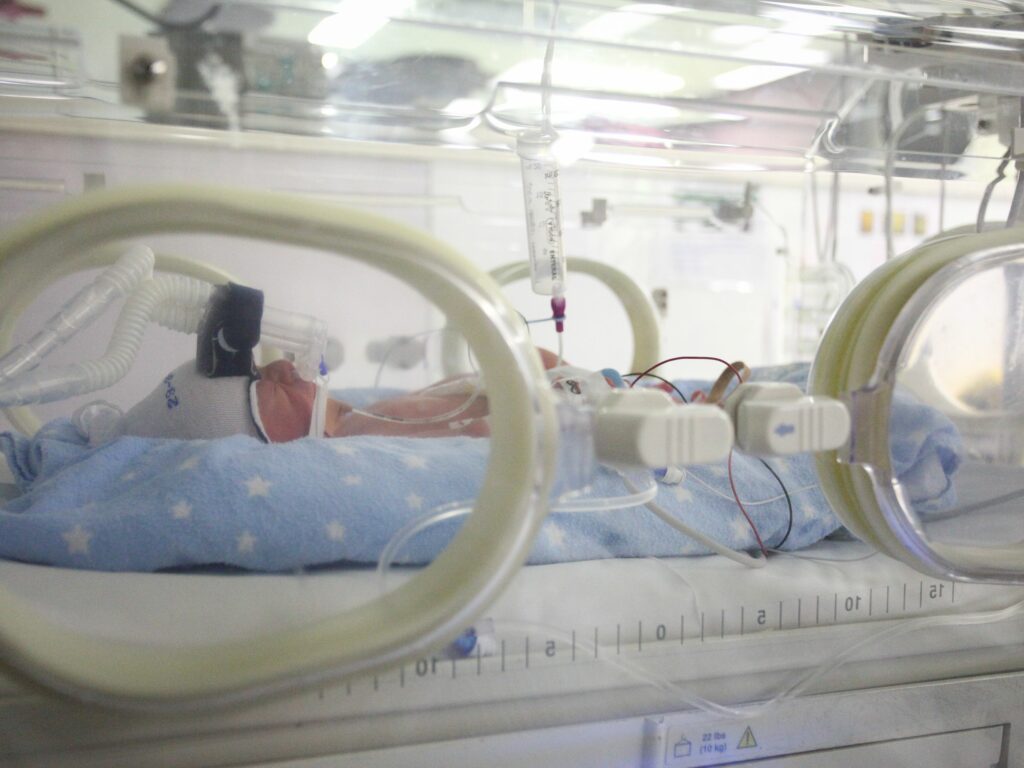
What is the working principle?
Bubble CPAP (bCPAP) is a non-invasive ventilation strategy, one of the methods by which continuous positive airway pressure (CPAP) is delivered to a spontaneously breathing newborn to maintain lung volumes during expiration. With this method, blended and humidified oxygen is delivered via short binasal prongs or a nasal mask and pressure in the circuit is maintained by immersing the distal end of the expiratory tubing in water. The depth to which the tubing is immersed underwater determines the pressure generated in the airways of the infant. As the gas flows through the system, it “bubbles” out and prevents buildup of excess pressures.
What is the need of newborn CPAP?
Because the lungs of newborns may not be fully developed, they sometimes have trouble breathing. CPAP offers non-invasive breathing support for babies with conditions that impact breathing. Health conditions which are responsible for trouble breathing are:
Respiratory Distress Syndrome
CPAP in infants is mainly used to treat respiratory distress syndrome (RDS). RDS occurs when a baby is born prematurely before their lungs have fully developed. The lungs of these infants are deficient in surfactant, a slippery substance that enables smooth lung expansion and contraction. Without these surfactants, breathing becomes difficult.
Apnea of Prematurity
Apnea is a condition recognized by long pauses in breathing that lead to an abnormally slow heart rate (bradycardia). It is generally caused by delayed development in the part of the brain that controls respiration and affects some premature babies. CPAP may reduce some apnea episodes by promoting regulated breathing.
Bronchopulmonary Dysplasia (BPD)
Bronchopulmonary dysplasia (BPD) is a breathing disorder where an infant’s lungs become irritated and do not develop normally. It occurs most often in low-weight infants born more than two months early. It is often seen in infants with respiratory distress syndrome (RDS). This breathing disorder is common in babies, born too early, since their lungs have not fully grown.
Components of Bubble CPAP
The bCPAP system consists of three major components:
1. Gas source: An oxygen blender connected to a source of oxygen and compressed air is used to supply an appropriate concentration of inspired oxygen (FiO2). Moreover the humidified blended oxygen is then circulated through corrugated tubing.
2. Pressure generator: Pressure in the bubble CPAP system is created by placing the distal expiratory tubing in water. Designated pressure is determined by the length of tubing immersed.
3. Patient interface: Nasal prongs which are attached to the ends of nasal cannula are used as the nasal interface between the circuit and the infant’s airway. Short and wide nasal prongs allow for a low resistance to air flow. It is important that the nasal interface be applied to the infant without air leakage while taking measures to prevent nasal trauma.
Other than this Bubble CPAP machine comes with the following components:
- Humidifier
- Water Chamber
- Pressure Manifold
- Green Tube -Line
- Mixer/Blender(High Flow)
- Heater Wire Adapter
- Breathing Circuit (Heated Wire)
- Temperature Probe
- CPAP Generator
- Infant Interface Kit
- Centre Pillar (Stand)
- Clamp to mount (Humidifier & Bubble Generator)
- Air Compressor
- Air & Oxygen Hose (High Pressure)
What does a Bubble CPAP machine for a preterm baby look like?
With infants, CPAP is applied using binasal cannula (nasal prongs), a single nasopharyngeal cannula, or a soft nasal mask connected to a long tube. Importantly, short binasal prongs are preferred by many clinicians because they are less cumbersome and less likely to cause skin irritation.
Top 5 manufacturers of Bubble CPAP machine
- Fisher & Paykel
- Fanem
- Flexicare
- Nice neotech
- Niramaya wellness
A complete list of the best-selling Bubble CPAP machines
- Fanem 1150-S Neonatal Bubble CPAP Machine
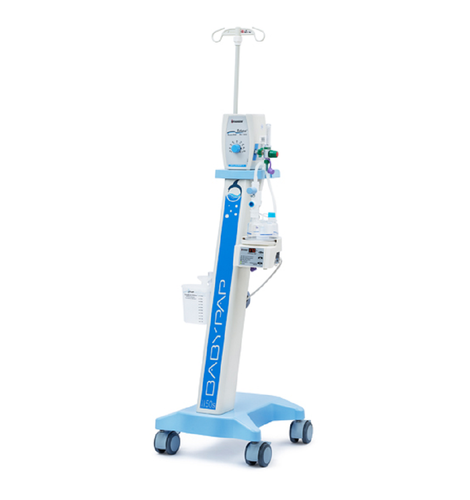
Babypap FANEM was developed to treat respiratory pathologies for oxygen therapy in newborn infants. Babypap® FANEM® provides flows of a heated and humidified Air and O2 mixture under controlled pressure, by water and bubble column, providing a Continuous Positive Airways Pressure – CPAP – in noninvasive mode.
With an operating platform of high technology level, the Babypap® FANEM allows an easier interaction, assuring more control of all operational parameters for the user.
The Babypap FANEM Model 1150-S is a basic equipment with pressure controlled by water column and bubble, and its module panel has a Blender type regulator for Air and O2 mixtures, and output fluxometer; the mixture is heated and humidified by a thermo.
Product Specification
Brand: Fanem
Model Number: 1150- S
Altitude Compensation: Fully automatic
Power: 110 or 220 V
Pressure relief valve: 17 cm H20
Price Range: 2-3 lakh
Main Features:
- Microprocessor-based controls
- Indication of temperatures at the chamber outlet and close to the patient;
- Audible and visual alarms;
- Indication of equipment turned on and heating;
- Double sensor for monitoring temperatures close to the patient and at the water chamber outlet
2. Fisher & Paykel FlexiFit 407 Nasal CPAP Mask with Headgear
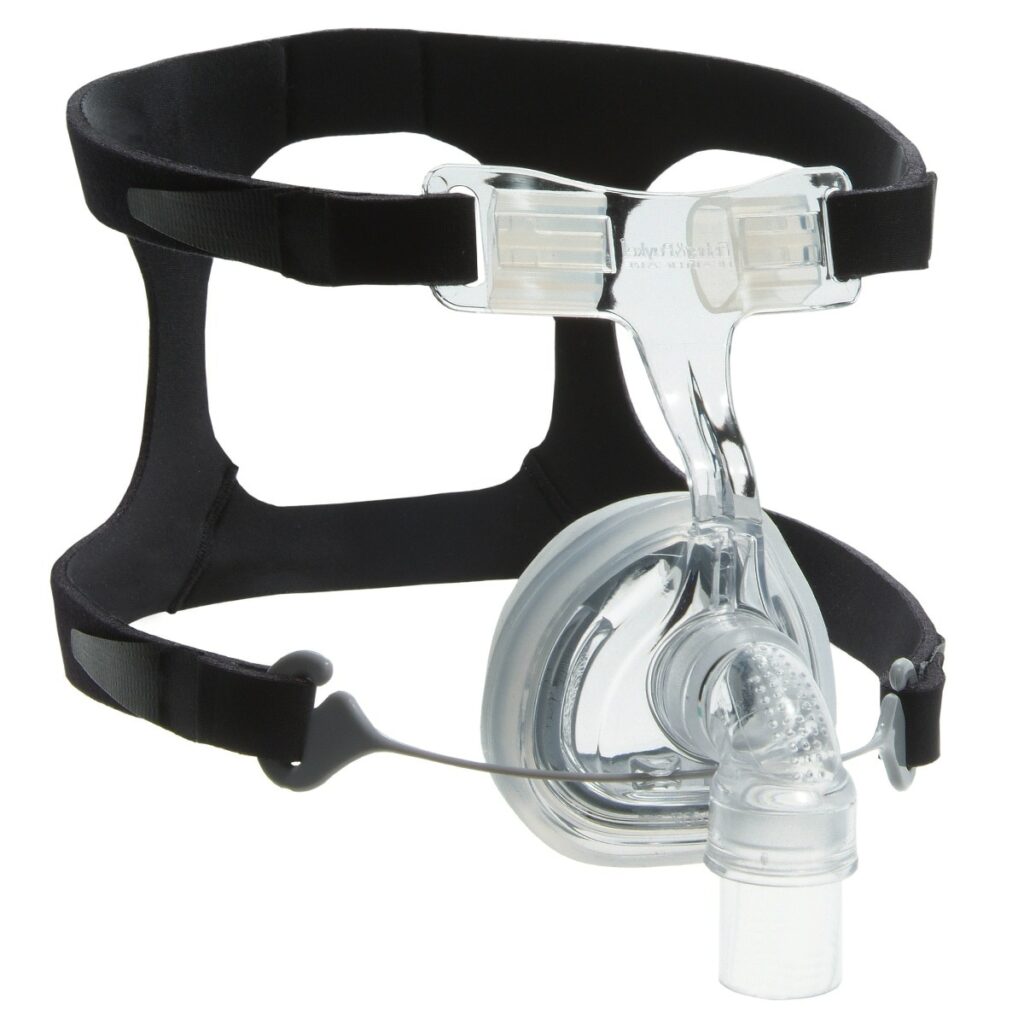
Remarkable freedom of movement, a higher level of comfort, less noise, a better seal and adjustment-free fit and removal mean the new, FlexiFit HC407 is easy to wear and easy to use all through the night!
Product Specification
Brand: Fisher & Paykel
Model Number: FlexiFit 407
Weight: 0.4 Kg
Dimensions: 18 × 13 × 10 cm
Price Range: 6,000- 7,500
Main Features:
- The HC407’s exclusive StretchGear Headgear with its unique glider mechanism is more adaptable and easier to put on and take off than other types of headgear.
- Fisher & Paykel redesigned and improved the cushioning and silicone seals on the HC407 to create a better fit with fewer pressure points.
- The mask’s advanced diffuser system channels air away from your face and disperses air through fine holes so that the mask is quiet and there is no disturbing air.
- The new strap releases on the HC407 are designed to make removal and cleaning easy and enable reassembly without have to adjust fit!
3. Flexicare Bubble CPAP machine
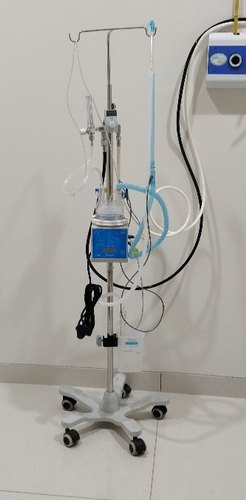
Flexicare Bubble CPAP Machine is a premium quality product from Flexicare. All Flexicare Bubble CPAP Machines are manufactured by using quality assured material and advanced techniques, which make them up to the standard in this highly challenging field. Flexicare has developed a series of combinations for CPAP and is available to provide patients with passive or active humidification.
Product Specification
Brand: Flexicare
Frequency: 60Hz
Phase: Single Phase
Power: 230 V
Price Range: 2- 3.5 Lakh
4. Nice Neotech 5060 Bubble CPAP System
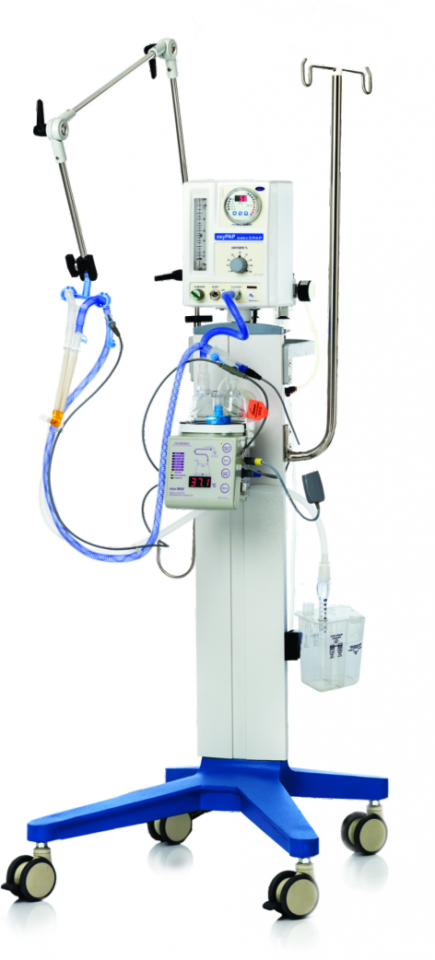
Bubble CPAP also known as Neonatal CPAP, is a unique bubble generating system that provides consistent and accurate delivery of CPAP to neonatal patients.
Product Specifications
Brand: Nice Neotech
Model Number: Nice Neotech 5060
Price Range: 2.5- 3.5 Lakh
Main Features:
- Active mechanical Air oxygen blender FiO2 could be varied from 21% to 100%
- Highly calibrated blender ensures accurate % of oxygen delivered.
- LED indicator to display the level of PEEP set to deliver CPAP to neonatal patients.
- High PEEP alarm and Low PEEP alarm for indication of PEEP levels.
- Low Air / Oxygen alarm indications for indication of low input pressure.
- Power failure alarm to alert the user or clinician.
- Preset pressure manifold that releases the additional pressure ensures accurate delivery of the set pressure and safety to the patient.
- Bubble generator with PEEP probe provides PEEP of 3 cmH2O to 10 cmH2O.
- Optimal humidity of greater than 33 mg/l promotes mucociliary clearance and reduces the work of breathing.
5. Niramaya wellness Bubble CPAP machine
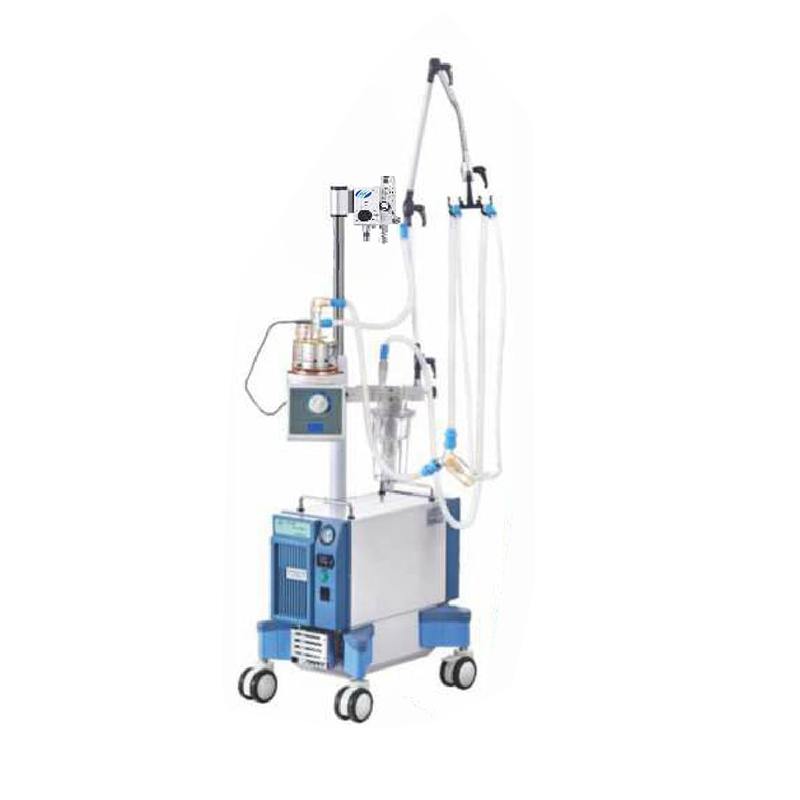
Neonatal continuous positive airway pressure support system with nasal or nasal congestion CPAP (Nasal-CPAP) will continue to positive air flow into the airway CPAP ventilator. Refers to the spontaneous breathing conditions, the patient should have a stable respiratory drive force and the appropriate tidal volume, in the entire breathing cycle of artificial imposition of a certain degree of positive airway pressure, which is conducive to prevent airway collapse, increase the functional residual capacity , Improve lung compliance, and improve oxygenation. In this mode, the ventilator only maintains a certain positive airway pressure, without mechanical ventilation. For spontaneous breathing of the newborn, to provide continuous positive pressure ventilation support.
Product Specifications
Brand: Niramaya Wellness
Flow regulation LPM: 0 LPM-1 0 LPM (Varies in different Air- Oxygen blender)
Oxygen concentration O2%: 21% -100%
CPAP pressure: 300 Pa – 1000 Pa (3 cm H2O – 10 cm H2O)
Power supply: Ac 220V ± 22V , 50Hz ± 1Hz.
Main Features:
- Able to give the baby a safe and controllable oxygen concentration.
- It is possible to effectively maintain the functional residual capacity.
- Can help reduce the breathing done by the baby.
- Can reduce the need for invasive mechanical ventilation.
- Able to give the baby a better wet gas.
- Can significantly reduce the incidence of chronic pneumonia (CLD).
- Can improve some of the lung physiological indicators, such as height, weight and so on.
- With inbuilt Air-oxygen blender.
6. Fisher & Paykel Bubble CPAP System
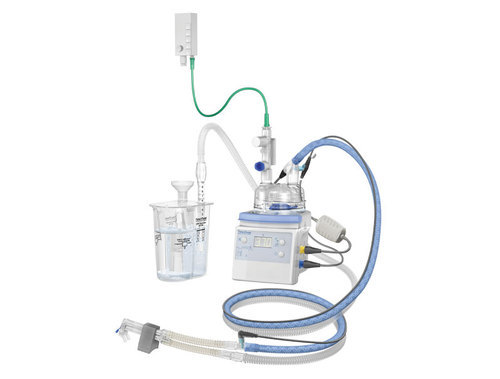
The F&P Bubble CPAP System is the first complete system available in an “All-in-One Pack”. It includes the Bubble CPAP generator, heated breathing circuits, humidification chamber, and pressure manifold. F&P FlexiTrunk is a lightweight nasal tubing with a unique, flexible extension for a stable prong and masks fixation while allowing for normal infant movement. The Fisher & Paykel Healthcare Bubble CPAP generator is designed to provide consistent pressure through an auto-leveling feature. This design moves excess liquid into a separate chamber from the main pressure-generating section, automatically ensuring that the set pressure does not change with liquid build-up.
Product Specification
- Input Flow Range: 4 to 15 L/min
- Recommended Input Flow: 6 to 8 L/min
- Set CPAP Pressure Range: 3 to 10 cmH2 O
- Intended Patient Population: Premature neonates and infants up to 10 kg
- Operating Temperature Range: 18 to 26 o C
- Storage Temperature Range: -10 to 50 o C
Price Range: 2-3 lakh
Features:
- Safe and Reliable: The unique auto-level mechanism of the Bubble CPAP generator provides consistent and accurate delivery of CPAP
- Easy to Use: Easy auto-leveling by simply adding water into the Fill Funnel on the Bubble CPAP generator.
- Optimum Humidification: The Fisher and Paykel Bubble CPAP System provides respiratory support with body-temperature pressure-saturated gases to the infant.
- Simple Yet Versatile: Adjustable Fisher Paykel Bubble CPAP from 3 to 10 cmH2O
7. Flexicare Bubble CPAP Machine
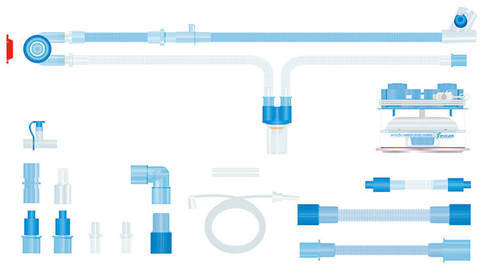
Flexicare Bubble CPAP Machine is a premium quality product from Flexicare. All Flexicare Bubble CPAP Machines are manufactured by using quality assured material and advanced techniques, which make them up to the standard in this highly challenging field. The materials utilized to manufacture Flexicare Bubble CPAP Machine are sourced from the most reliable and official vendors, chosen after performing detailed market surveys. Flexicare products are widely acknowledged in the market for their high quality.
Product Specifications:
- Pressure Monitoring Port
- Oxygen Analyzer Port
- CPAP Heated Wire System 1.6m with Large Adult Mask
- Headstrap
- 5cm H2O PEEP valve
- Autofill Chamber
8. SS Technomed Restohealth Bubble CPAP Machine
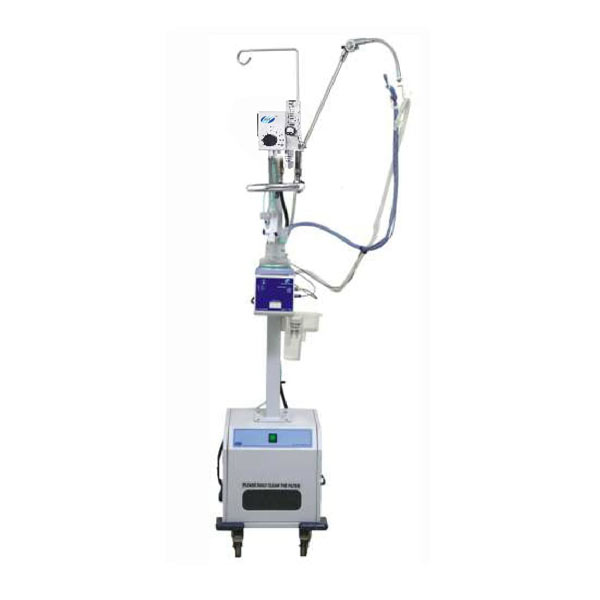
Neonatal continuous positive airway pressure support system with nasal or nasal congestion CPAP (Nasal-CPAP) will continue to positive airflow into the airway CPAP ventilator. Refers to the spontaneous breathing conditions, the patient should have a stable respiratory drive force and the appropriate tidal volume, in the entire breathing cycle of artificial imposition of a certain degree of positive airway pressure, which is conducive to preventing airway collapse, increasing the functional residual capacity, Improve lung compliance and improve oxygenation. In this mode, the ventilator only maintains a certain positive airway pressure, without mechanical ventilation. For spontaneous breathing of the newborn, to provide continuous positive pressure ventilation support.
Price range: 1-2 lakh
Product Specification:
- Ventilation mode ( MODE) – CPAP (BUBBLE CPAP) mode.
- Flow regulation LPM – 0 LPM-1 0 LPM (Varies in different Air – Oxygen blender).
- Oxygen concentration O2% – 21% -100%
- CPAP pressure – 300 Pa – 1000 Pa (3 cm H2O – 10 cm H2O).
- Pressure warning – Sound alarm (Pneumatic alarm).
- Indicator light – On indicates that the device is in operation.
- Working noise – Not more than 55dB (A).
- Gas input – Medical oxygen 0.3MPa-0.4MPa.
- Power supply – Ac 220V ± 22V, 50Hz ± 1Hz.
Main features:
- Able to give the baby a safe and controllable oxygen concentration.
- It is possible to effectively maintain the functional residual capacity.
- Can help reduce the breathing done by the baby.
- Can reduce the need for invasive mechanical ventilation.
- Able to give the baby a better-wet gas.
- Can significantly reduce the incidence of chronic pneumonia (CLD).
- Can improve some of the lung physiological indicators, such as height, weight, and so on.
CPAP pressure generator:-
- With the CPAP pressure bar, it is easy to set the shock pressure from 3 to 250px water column.
- Automatic water level adjustment mechanism to ensure constant CPAP pressure levels.
- A removable water tank can keep the CPAP from being interrupted.
9. SS Technomed Restohealth-01 Bubble CPAP
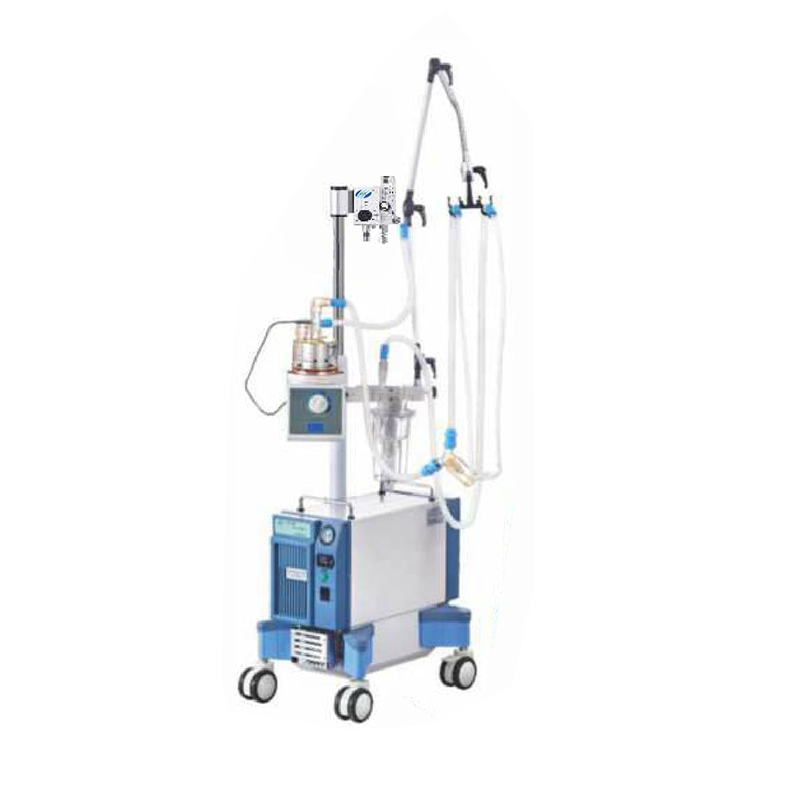
Neonatal continuous positive airway pressure support system with nasal or nasal congestion CPAP (Nasal-CPAP) will continue to positive airflow into the airway CPAP ventilator. Refers to the spontaneous breathing conditions, the patient should have a stable respiratory drive force and the appropriate tidal volume, in the entire breathing cycle of artificial imposition of a certain degree of positive airway pressure, which is conducive to preventing airway collapse, increasing the functional residual capacity, Improve lung compliance and improve oxygenation. In this mode, the ventilator only maintains a certain positive airway pressure, without mechanical ventilation. For spontaneous breathing of the newborn, to provide continuous positive pressure ventilation support.
Price Range: 3.5- 4 lakh
Product Specification:
- Ventilation mode ( MODE) – CPAP (BUBBLE CPAP) mode.
- The scope of application – Applicable to spontaneous breathing of the newborn, to provide continuous positive pressure ventilation support.
- Flow regulation LPM – 0 LPM-1 0 LPM (Varies in different Air – Oxygen blender).
- Oxygen concentration O2% – 21% -100%
- CPAP pressure – 300 Pa – 1000 Pa (3 cm H2O – 10 cm H2O).
- Pressure warning – Sound alarm (Pneumatic alarm).
- Indicator light – On indicates that the device is in operation.
- Working noise – Not more than 55dB (A).
- Gas input – Medical oxygen 0.3MPa-0.4MPa.
- Power supply – Ac 220V ± 22V, 50Hz ± 1Hz.
Main Features:
- Able to give the baby a safe and controllable oxygen concentration.
- It is possible to effectively maintain the functional residual capacity.
- Can help reduce the breathing done by the baby.
- Can reduce the need for invasive mechanical ventilation.
- Able to give the baby a better-wet gas.
- Can significantly reduce the incidence of chronic pneumonia (CLD).
- Can improve some of the lung physiological indicators, such as height, weight, and so on.
CPAP pressure generator:-
- With the CPAP pressure bar, it is easy to set the shock pressure from 3 to 250px water column.
- Automatic water level adjustment mechanism to ensure constant CPAP pressure levels.
- A removable water tank can keep the CPAP from being interrupted.
10. SS Technomed Restohealth-02 Bubble CPAP System
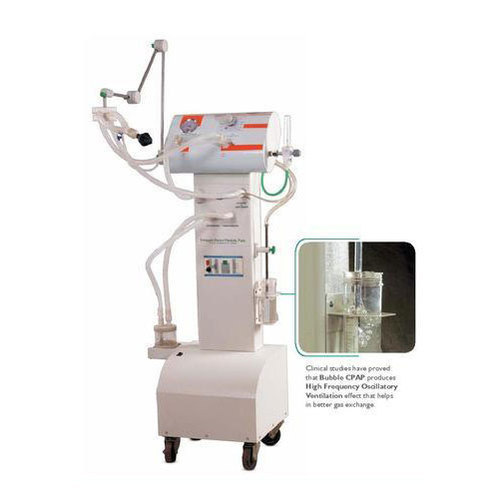
Neonatal continuous positive airway pressure support system with nasal or nasal congestion CPAP (Nasal-CPAP) will continue to positive airflow into the airway CPAP ventilator. Refers to the spontaneous breathing conditions, the patient should have a stable respiratory drive force and the appropriate tidal volume, in the entire breathing cycle of artificial imposition of a certain degree of positive airway pressure, which is conducive to preventing airway collapse, increasing the functional residual capacity, Improve lung compliance and improve oxygenation. In this mode, the ventilator only maintains a certain positive airway pressure, without mechanical ventilation. For spontaneous breathing of the newborn, to provide continuous positive pressure ventilation support.
Price Range: 2.5- 3 lakh
Product Specification:
- Ventilation mode ( MODE) – CPAP (BUBBLE CPAP) mode.
- The scope of application – Applicable to spontaneous breathing of the newborn, to provide continuous positive pressure ventilation support.
- Flow regulation LPM – 0 LPM-1 0 LPM (Varies in different Air – Oxygen blender).
- Oxygen concentration O2% – 21% -100%
- CPAP pressure – 300 Pa – 1000 Pa (3 cm H2O – 10 cm H2O).
- Pressure warning – Sound alarm (Pneumatic alarm).
- Indicator light – On indicates that the device is in operation.
- Working noise – Not more than 55dB (A).
- Gas input – Medical oxygen 0.3MPa-0.4MPa.
- Power supply – Ac 220V ± 22V, 50Hz ± 1Hz.
Main Features:
- Able to give the baby a safe and controllable oxygen concentration.
- It is possible to effectively maintain the functional residual capacity.
- Can help reduce the breathing done by the baby.
- Can reduce the need for invasive mechanical ventilation.
- Able to give the baby a better-wet gas.
- Can significantly reduce the incidence of chronic pneumonia (CLD).
- Can improve some of the lung physiological indicators, such as height, weight, and so on.
Additional Feature of Restohealth-02 Bubble CPAP System:-
- With inbuilt Air-oxygen blender.
- Compact, easy to carry with a built-in handle on the top.
- Can be used as transport CPAP, if attached to the power supply and oxygen.
- New concept free built-in air compressor easy BUBBLE CPAP.
- Low power design for spontaneous breathing of newborns and children, to provide continuous positive pressure ventilation support.
- Small size, low noise, maintenance-free for NICU, transport, pediatric ward, and other different places.
Frequently Asked Questions
Q1. How long will baby be on a CPAP?
It’s hard to say how long your baby will need CPAP because every preemie progresses at a different rate. Much depends on your baby’s growth and if they are meeting certain stability criteria. For some babies, CPAP is discontinued at once. For others, respiratory support is gradually reduced until they are safely and consistently breathing on their own.
Q2. What does a CPAP machine for a preterm baby look like?
Most CPAP devices for infants consist of either a small mask or a set of nasal prongs extending into the baby’s nose on one end and attached to an air source on the other. When applied properly, your baby should feel no discomfort when using CPAP.
Q3. Why would a premature baby need a bubble CPAP?
Bubble CPAP is one type of CPAP device used to provide heated and humidified gas to assist with breathing in infants. The benefits of b-CPAP in smaller babies include lower risk of chronic lung disease, improved overall outcomes, and shorter NICU stays.
Q4. What is the difference between CPAP and bubble CPAP?
Bubble CPAP also differs from ventilator-derived CPAP mechanistically. The mean pressure applied to the infant’s airway in bubble CPAP is not constant, as it is in ventilator-derived systems, but, rather, resonant, with the airway pressure actually fluctuating approximately 4 cm H2O around the mean.
Q5. What is bubble nasal cannula?
Bubble CPAP provides continuous distending airway pressure during inspiration and expiration via nasal prongs; this has been shown to increase lung volume by increasing alveolar size, recruiting collapsed alveoli, and preventing atelectasis.
Conclusion
It can be disconcerting for a parent to see their tiny baby hooked up to a mask or with tubes coming out of their nose. But CPAP is an important tool to help the smallest babies breathe effectively so they can continue to grow and one day “graduate” from the NICU.

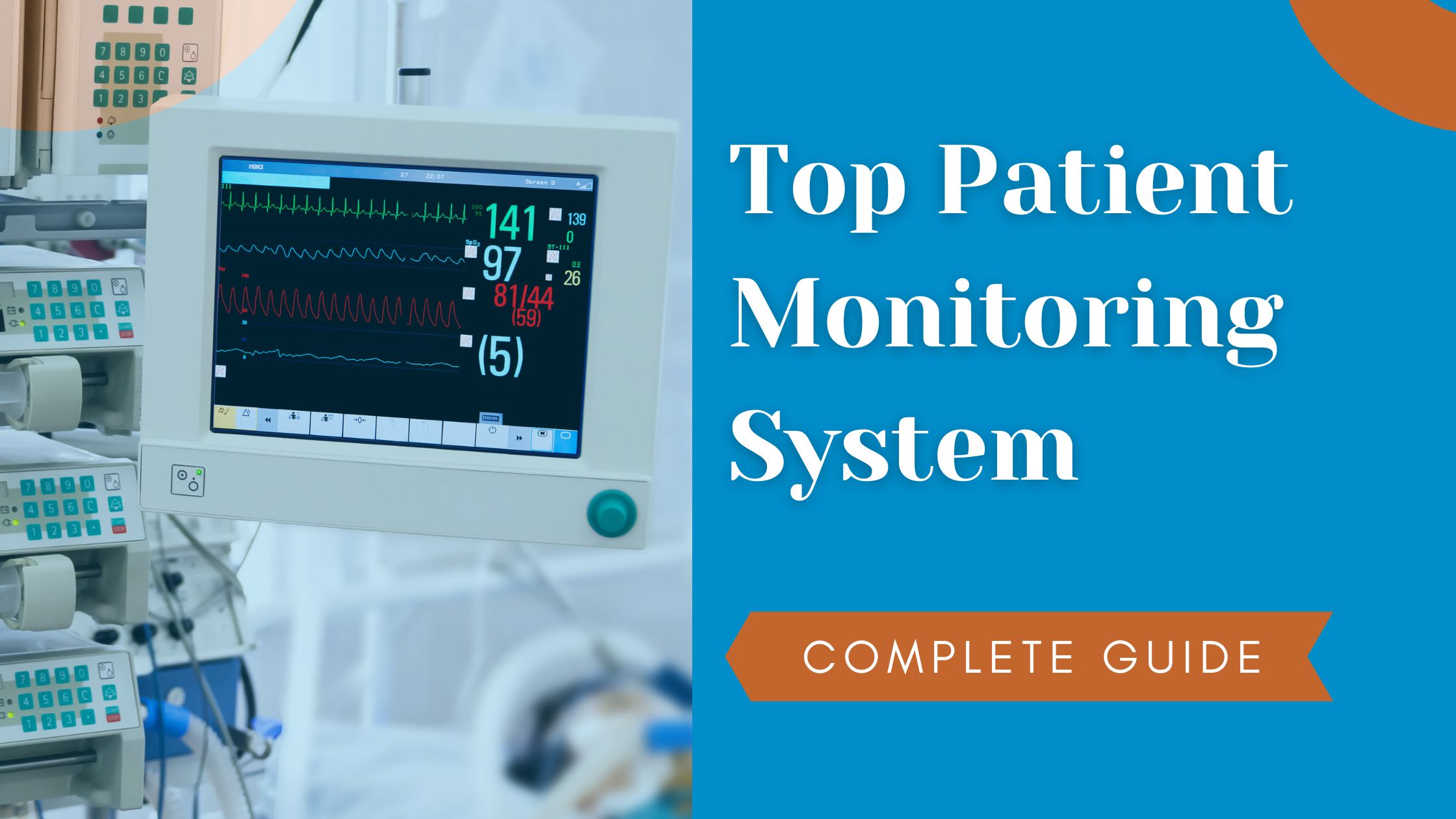
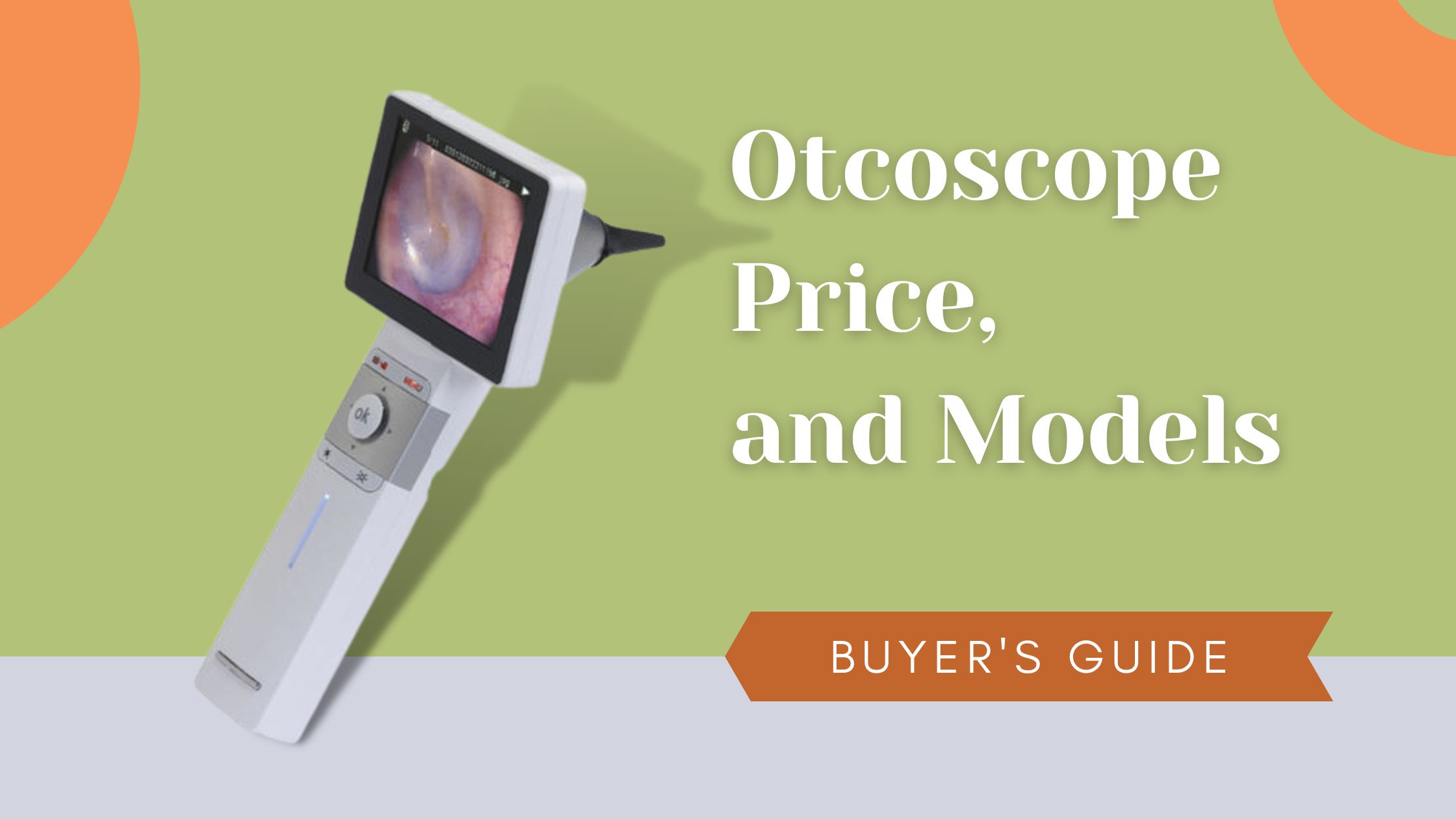
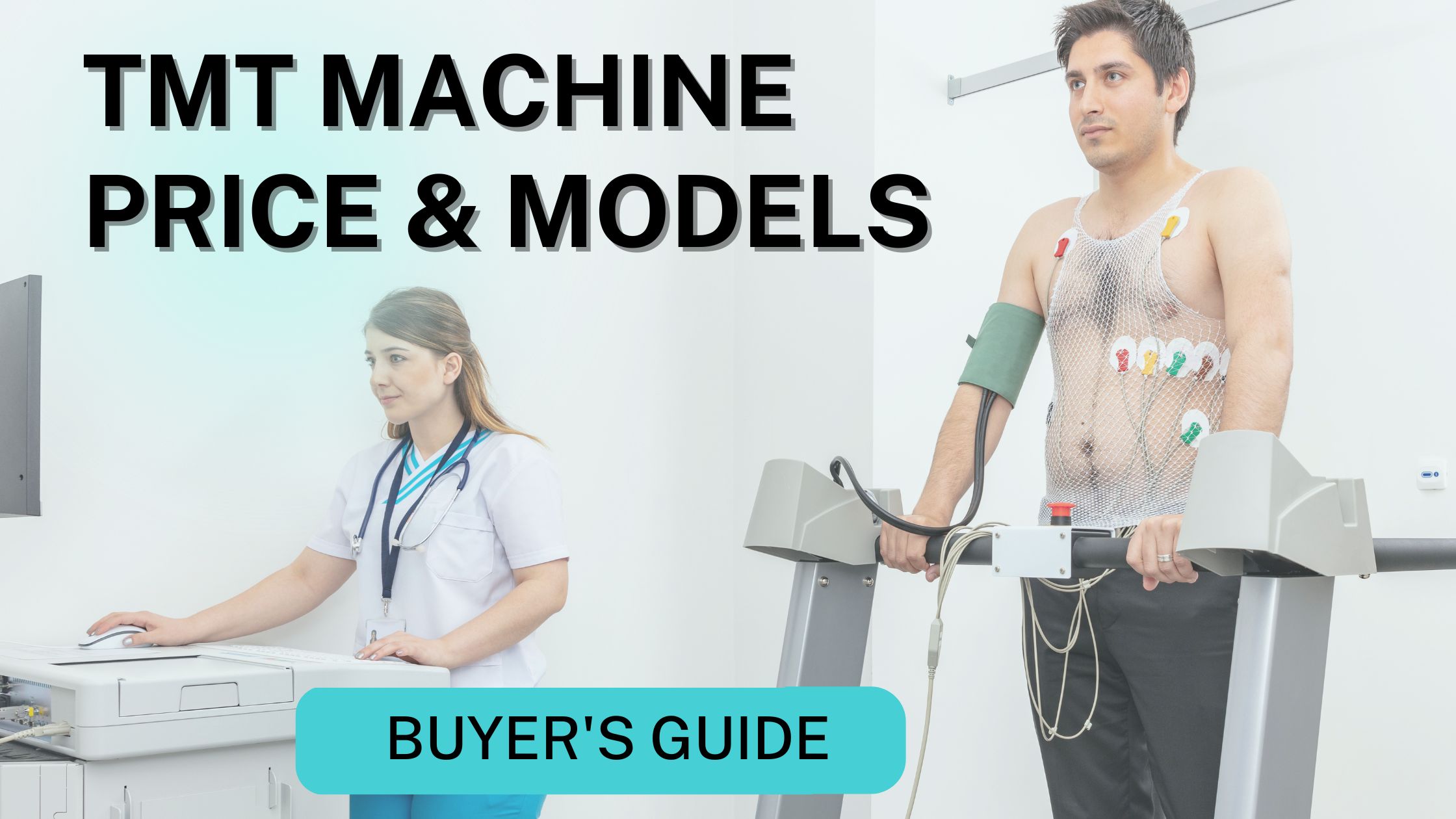
Very much informative 👍 👏